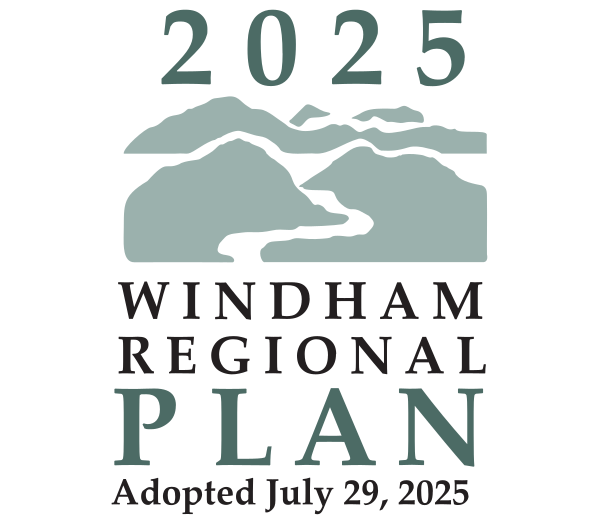Introduction
Regional Goals
A set of regional goals has withstood the test of time for relevance and importance to the Windham Region. These goals evolved from prior plans and they continue to be the subject of on-going dialogue between the WRC and its member towns. The regional goals which correspond generally to the Vermont Planning Goals are:
- To plan development in order to maintain the region's land use and historic settlement pattern of compact villages and urban centers separated by rural countryside;
- To encourage the availability of a reliable, sufficient, and economical energy supply, to support energy conservation and efficiency, to encourage the development of appropriately scaled and sited energy generation resources, and to facilitate conversations between towns where different interests exist;
- To provide for safe, convenient, economical, and energy efficient transportation systems including options such as public transit and paths for pedestrians and bicyclists, where appropriate;
- To provide a vital and diverse economy with rewarding job opportunities and high environmental standards for the region's citizens;
- To encourage and strengthen agricultural and forest enterprises;
- To maintain and improve the quality of air, water, wildlife, and land resources in the region;
- To identify, protect, and preserve regionally important natural and historic features of the Vermont landscape;
- To provide for thoughtful and efficient use of the region's natural resources, including the prevention of surface water and groundwater pollution, the protection of fragile natural habitats and endangered or threatened species, the avoidance of agricultural and other land-use practices that lead to soil erosion, the management of woodlands on a sustainable basis, and the sensitive treatment of scenic resources. Mineral extraction should have minimal adverse effects on aesthetics, water quality, air quality, and special community resources (such as historic sites, recreation, or scenic areas), and effective site rehabilitation plans should be provided and implemented;
- To plan for, and to educate the public about, natural and other hazards in the region, the prevention and mitigation of these hazards, and for preparedness, response, recovery, and resilience.
- To educate the public about the inherent risk to life and property associated with development within river and stream corridors, including fluvial erosion hazard areas, and to continue to develop actions and policies that prevent and mitigate these risks wherever possible.
- To promote the development of housing suitable to the needs of the region and to ensure the availability of safe and affordable housing for all citizens of the region;
- To broaden access to education and training for all citizens;
- To maintain and enhance recreational opportunities for both residents and visitors in keeping with the carrying capacity of natural resources and public facilities;
- To plan for, finance, and provide an efficient system of public facilities and services (such as schools, water and wastewater facilities, highways and bridges) to meet future local, regional, and state needs; and
- To support affordable access to high-quality health care services for all citizens
